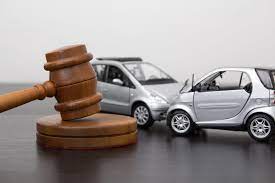Processing
Traffic rules are an integral part of modern life, ensuring order and safety on the roads. However, their enforcement was not always strictly regulated, and the system of fines did not appear immediately. The history of penalizing traffic violations is a fascinating journey from chaos to order.
The beginning of the motorized era
With the appearance of the first automobiles at the end of the 19th century, roads witnessed new types of violations. Before this, transportation was limited to horse-drawn carriages and bicycles, and traffic rules, if they existed at all, were mostly local and quite simple. As the number of cars on the roads increased, so did the number of incidents, leading to the need for new rules and control mechanisms.
The first regulations and penalties
In 1903, the United Kingdom passed the "Motor Act," which became the first law to regulate the use of motor vehicles. It mandated vehicle registration and driver's licenses and set speed limits. Violations of these norms were subject to fines, the first official sanctions for traffic rule violations.
One of the first instances of a fine being imposed occurred in London in 1896. Driver Walter Arnold was fined one shilling for speeding—he was driving at 8 miles per hour in a 2 miles per hour zone. This decision set a precedent for future fines and penalties.
Implementation of the fine system
Starting with the first speeding fines, other sanctions were gradually introduced. As automobile transport developed, there was a need for a comprehensive system of fines covering various types of violations, from improper parking to driving under the influence of alcohol.
In the 1920s, many countries began to introduce rules and fines for running red lights, the absence of road signs, and other violations. In the USA, for example, New York introduced speeding fines for the first time in 1923, establishing police patrols to enforce the rules.
Modern technologies and fines
With technological advancement, methods of controlling traffic rule compliance have significantly improved. Today, speed cameras, radars, and other electronic devices help ensure adherence to traffic laws. Fines have become more automated and efficient, reducing the level of violations and enhancing road safety.
Legal assistance and advocacy in traffic accidents
Lawyers and attorneys play a crucial role in protecting drivers' rights in traffic accidents. Their involvement can be decisive both at the administrative review stage and in court proceedings. Here are the main aspects of their work in this field:
- Auto lawyer provide consultations on drivers' rights and obligations in traffic accidents.
- They explain how to act correctly at the accident scene, how to communicate with the police and other accident participants.
- They inform about the necessary documents and procedures.
- Situation Analysis
- Car lawyer analyze the circumstances of the traffic accident, helping drivers understand their legal position.
- They examine evidence, including testimonies, photos, videos, and expert conclusions.
- Protection of Drivers' Rights and Interests
- Representation in law enforcement agencies: attorneys represent drivers during case reviews by the police and other administrative bodies.
- Court defense: lawyers prepare and submit procedural documents to the court, represent drivers in court sessions.
- Dispute Resolution and Compensation
- Mediation and negotiations: auto lawyers act as intermediaries in negotiations with other accident participants and their representatives.
- Damage compensation: attorneys help drivers obtain compensation for material and moral damage caused by the accident.
- Expertise and Evidence
- Organization of expert examinations: lawyers arrange independent expert examinations to confirm or refute the technical aspects of the accident.
- Legal Support in Traffic Accidents and Representation in Administrative Bodies
- Assistance in administrative procedures: accident lawyer help with the preparation of administrative complaints and appeals against law enforcement decisions.
- Accompany drivers during case reviews in administrative courts.
Conclusion
The history of penalizing traffic rule violations is an evolution from the first attempts at control to modern high-tech systems. The first fines were an important step towards creating safe road conditions and laid the foundation for the modern system of road regulation. Continuous improvement of rules and control methods has made roads safer for all users. Today, lawyers and attorneys are crucial partners for drivers involved in traffic accidents. They provide legal protection, help gather and prepare necessary documents, represent drivers in law enforcement agencies and courts, and assist in dispute resolution and obtaining compensation. Their involvement helps drivers protect their rights and avoid unjust punishments or accusations.




































